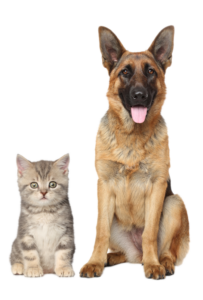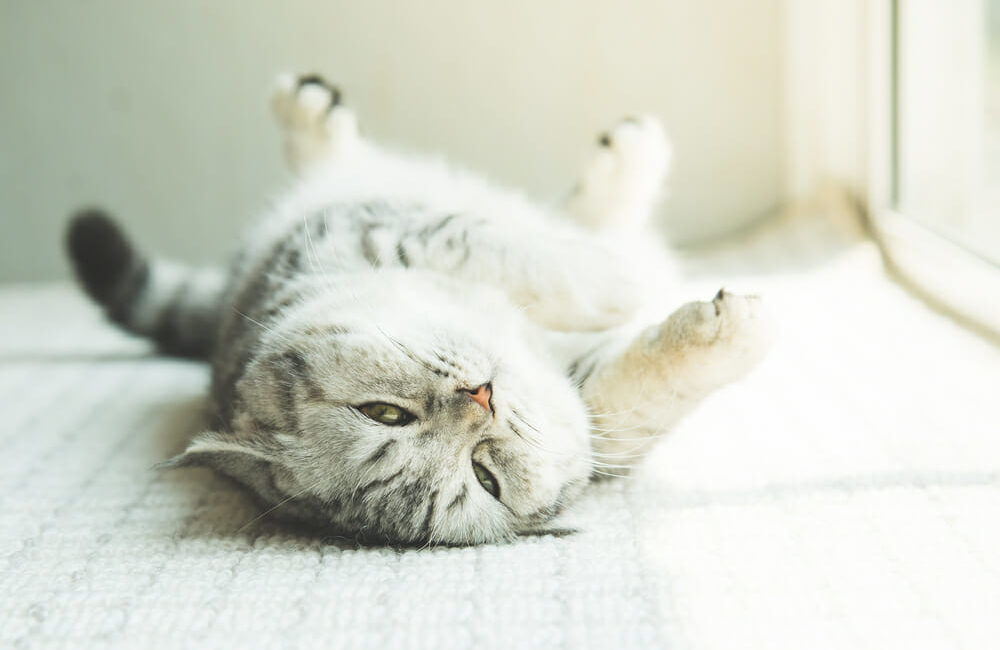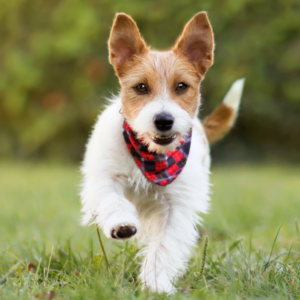Overweight and obese pets are becoming one of the biggest health issues to face our companion animals. Not only is the number of overweight pets increasing but also the misconception that some overweight pets are at a healthy weight. I have friends who while out on walks or at a dog park have been told their pet is too skinny or accused of starving their pets when in fact they are at a perfectly healthy weight.
Knowing if a pet is at a healthy weight is not just about how many pounds they are; it’s about what their body condition is. Have a good feel of their ribs and spine, there should be a thin layer of fat covering them, and you should be able to feel their bones when you press down lightly. You should also be able to see their waist is tucked in at the sides and have an hourglass shape when looking at them from above. If you are having difficulty accessing their weight, your veterinarian would be able to help show you what to look for. If they are overweight, they can let you know how much weight should be lost. The more overweight a pet is, the more health associated issues there are. Some of these include arthritis, diabetes, respiratory disease, kidney disease, pancreatitis, cancer and an overall shorter life expectancy.
Diet is a big component of weight loss, and we want to make sure weight loss is made in a healthy way. It can take several months to a year to get a pet down to a healthy weight. Even then it is very slow, or you don’t quite get to the exact weight every pound down counts. In turn, it lowers the risks of health complications due to weight. There are some great diets designed for weight loss, which can help make the weight loss easier, faster and make sure your pet is still getting balanced nutrition. Diets designed for weight loss ensure that while restricting calories, they still provide all the nutrition necessary for health. Cutting out treats and human food is important too. Sometimes just cutting out treats is all that is necessary to achieve the weight loss necessary. Even small amounts of human food can add up to a lot of extra calories on top of the food they are already getting. If you have a small dog or cat and you fed him or her a small amount of cheese or bacon that could equal the same caloric intake as if you were to eat a whole hamburger!
Getting outside can be tough with our weather, but keeping active is important. My cat is indoors only so to keep him moving at night instead of putting his kibble into a bowl I throw one piece at a time around the house, and he loves to run and get them. I also have a treat ball that I put food into and makes him work to get it out. For some dogs, they may also enjoy going to a canine fit club or agility classes. If activity is decreased during the winter months, the caloric intake should also be decreased, so those extra calories don’t turn into an added weight on your pet. Timed feeders can also be helpful, and pets love routine so if the feeder is set to always feed at the same time they can get used to that schedule and it takes away the thought that seeing you means their next meal. Begging is a learned behaviour, and it can take time and be hard to break, but with persistence, they can learn that this behaviour does not get them food. There may be some ups and downs on the journey of weight loss with your pet, but reaching that goal is a great accomplishment that can help keep them with you longer.
Weight can also be an indication of certain disease processes. If you notice your pet has either gained or lost weight and you have not made any changes to their diet it is recommended to have an appointment with your veterinarian to see if there could be an underlying cause for the weight change.
Below are links to some blogs from the Canadian Veterinary Medical Association with further information on weight loss and the risks of obesity to pets.
Obesity Poses Serious Health Hazards to Pets
Weight Loss Is A Challenge But Possible In Pets
Written by: Lauren Woschee




